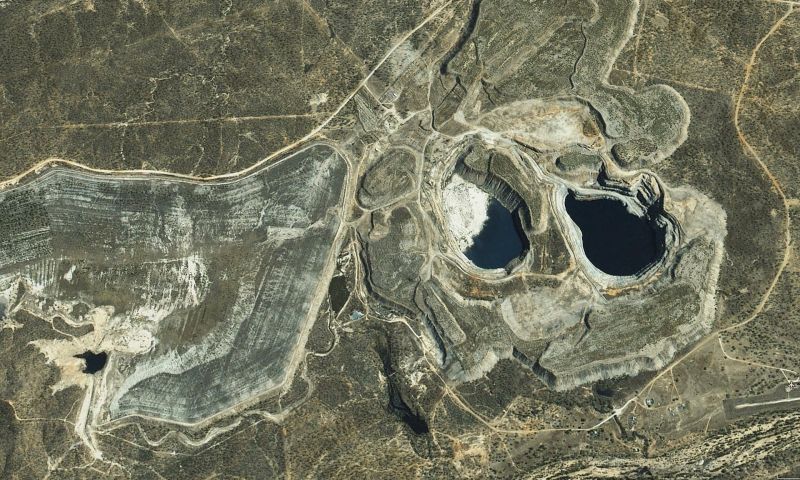Abandoned Goldmine to be Converted into an Energy Storage
Published on by Water Network Research, Official research team of The Water Network in Government
Australia has no plan for managing disused mines but a company has a novel solution for producing renewable energy.
Gold was discovered on the Copperfield river in north-western Queensland in 1907. As men flocked to find their fortune, a small township was established and named for the state’s then premier, William Kidston. For close to 100 years, Kidston was a mining town.
 But, in 2001, the largest operation – a Canadian-owned goldmine – shut down. The site became another of the roughly 50,000 “orphaned” mines littered across Australia.
But, in 2001, the largest operation – a Canadian-owned goldmine – shut down. The site became another of the roughly 50,000 “orphaned” mines littered across Australia.
Photographs of the disused site show the prominent scars of human activity: two adjacent craters, 300m deep. But in those voids lies an opportunity.
Today, the site is coincidentally in the custody of the great-great-grandson of the former Queensland premier.
Simon Kidston is the executive director of Genex, an ASX-listed company with plans to reuse the massive craters on site for a world-first pumped hydroelectric energy storage (PHES) system, combined with an integrated solar farm.
“We’re not aware of any examples anywhere else in the world where there is a large pumped storage system, or any efficient storage mechanism, with a renewable generation component attached to it – not on the scale we’re talking about,” Kidston says.
Pumped hydro is the most affordable and widely used form of industrial-scale energy storage globally, accounting for nearly 99% of the market. It provides an option to store intermittent renewable energy from wind and solar, and instantly dispatch it to the grid during periods of peak demand, or in the event of an unplanned network outage.
A 50 megawatt (MW) solar farm is already under construction and is scheduled for completion by the end of 2017. It will cost roughly $100m and will generate 145,000 megawatt hours (MWh) per year, or enough energy to power some 27,500 homes, Kidston says.
Stage two of the project is a 300MW PHES. This will operate for seven-hour generation cycles once each day, delivering a maximum of 2250 MWh to the grid.
All that’s needed for a PHES are two reservoirs at different heights, typically between 100m and 1,000m, and a way to pump water between them. This difference in elevation is known as the “water head” and, along with the volume of water stored in the upper reservoir, determines the system’s potential energy.
 When demand is low, electricity is sourced from the grid to pump water to the higher reservoir. When the energy needs to be recovered, the water is released.
When demand is low, electricity is sourced from the grid to pump water to the higher reservoir. When the energy needs to be recovered, the water is released.
As it flows back down to the lower reservoir through a tunnel or pipe, it drives a turbine in an underground powerhouse, which converts it to electricity.
It’s estimated that the Genex system will have an average water head of 190m and will shift 5 million cubic metres of water, or the equivalent of 2,000 Olympic swimming pools, for each generation cycle.
There are hundreds of PHES systems worldwide and three in Australia. But these three systems are linked with on-river hydroelectric facilities. The Genex project will be the first large-scale, “off-river” solution. This means the same water cycles continuously through the two reservoirs in a closed loop, without being discharged. This minimises environmental impacts.
“We realised environmental issues would prevent damming of rivers in mountains, where most hydro is located,” Kidston says. “And we also wanted to pursue a low-cost development strategy.”
The company took notice of some international projects using closed mine sites and Kidston recalled the story of his great-great grandfather. “That was just a seed in the back of my head and, when we first started thinking about this concept, it emerged and we investigated it.”
The site and infrastructure left behind at Kidston were a perfect fit: the two large mine pits are in close proximity, with water already inside, and a dam nearby with a pipeline to the site. This will enable access to additional water in case of drought, as the company already has a licence in place to draw up to 4,600 megalitres per year.
There is a transmission line and substation on site, as well as good road access, an airstrip and a camp for accommodating construction workers. There’s also plenty of sunshine for solar generation and durable rocks inside the pits, which won’t degrade with changing water levels, Kidston says.
By leveraging the existing infrastructure and permits, Genex could save hundreds of millions of dollars. Most conventional PHES systems cost between $4m and $5m per installed megawatt to build, he says. By comparison, Genex is projecting that its 300MW facility will cost just $1m per installed megawatt.
Source: The Guardian
Media
Taxonomy
- Energy
- Mine Water Management
- Renewable Energy Projects
- Plant Engineering
- Hydroelectric Energy
- Renewable Energy